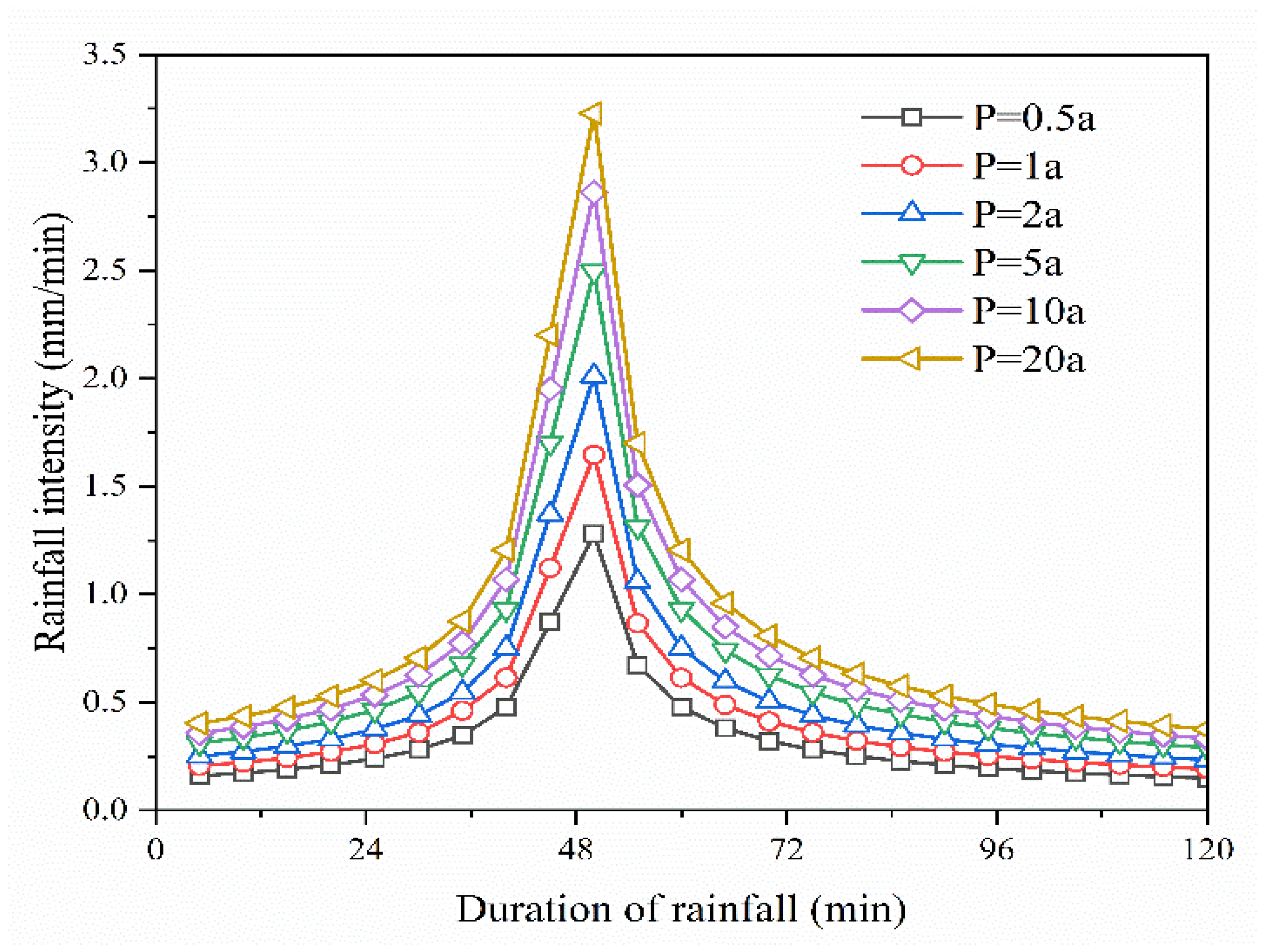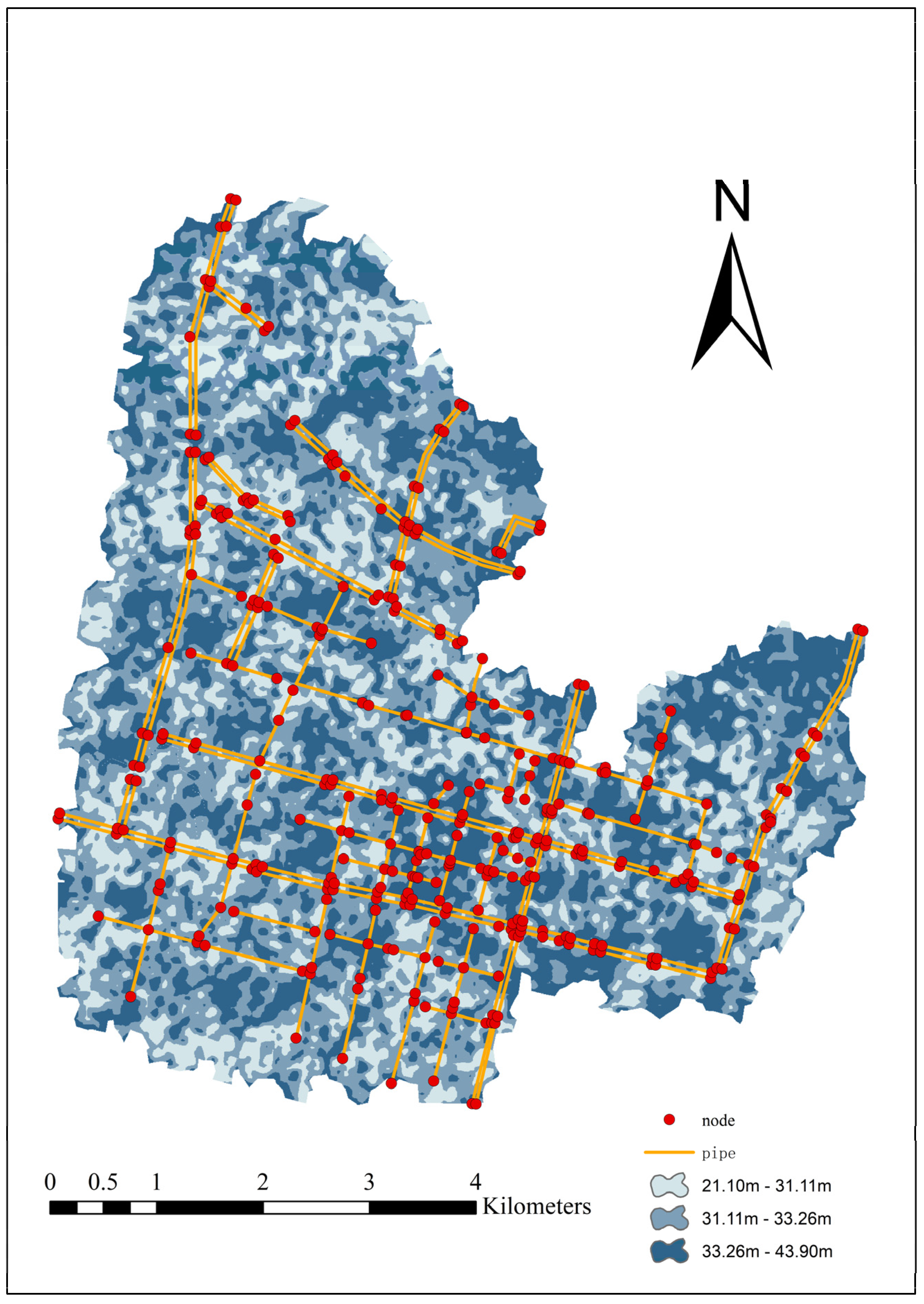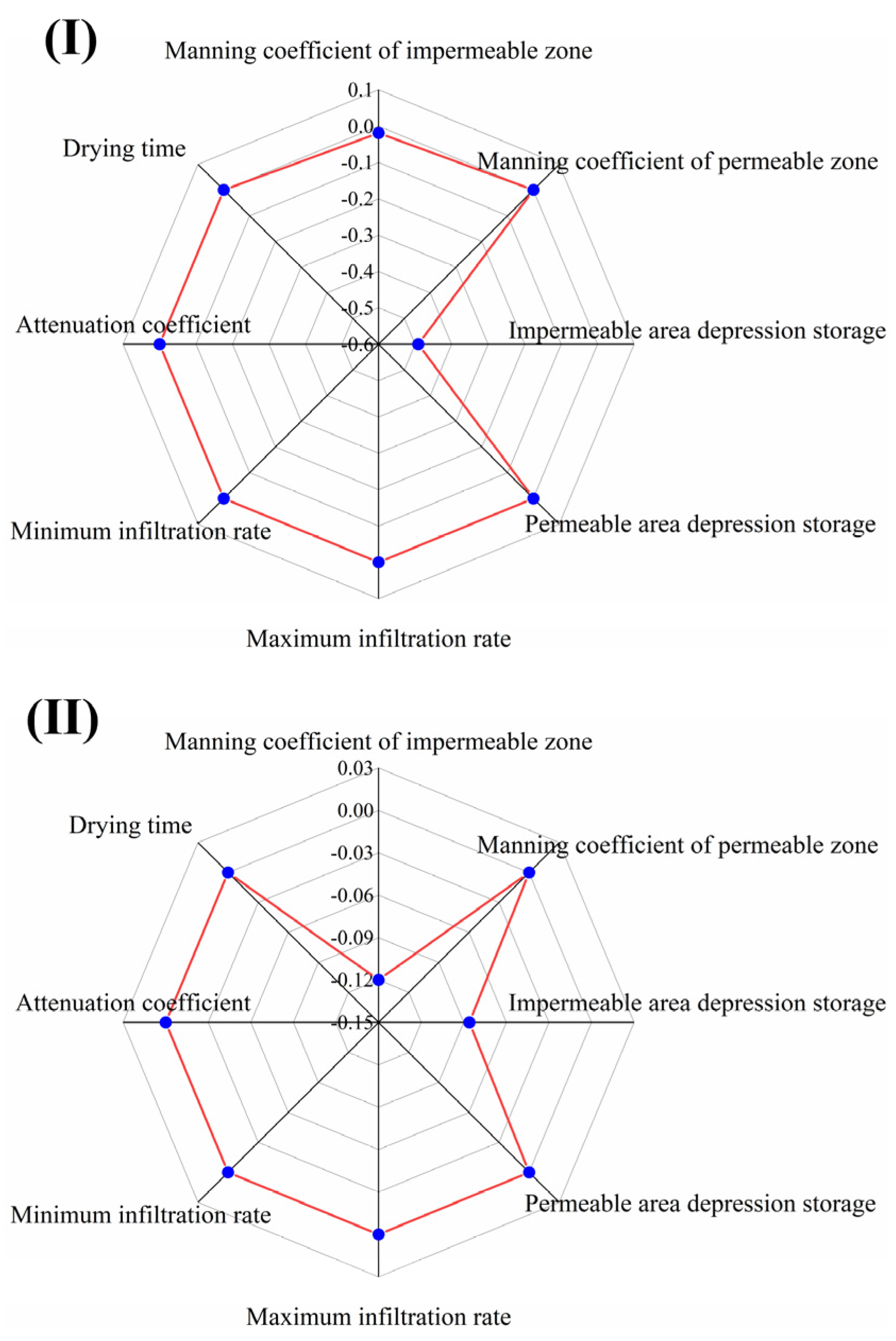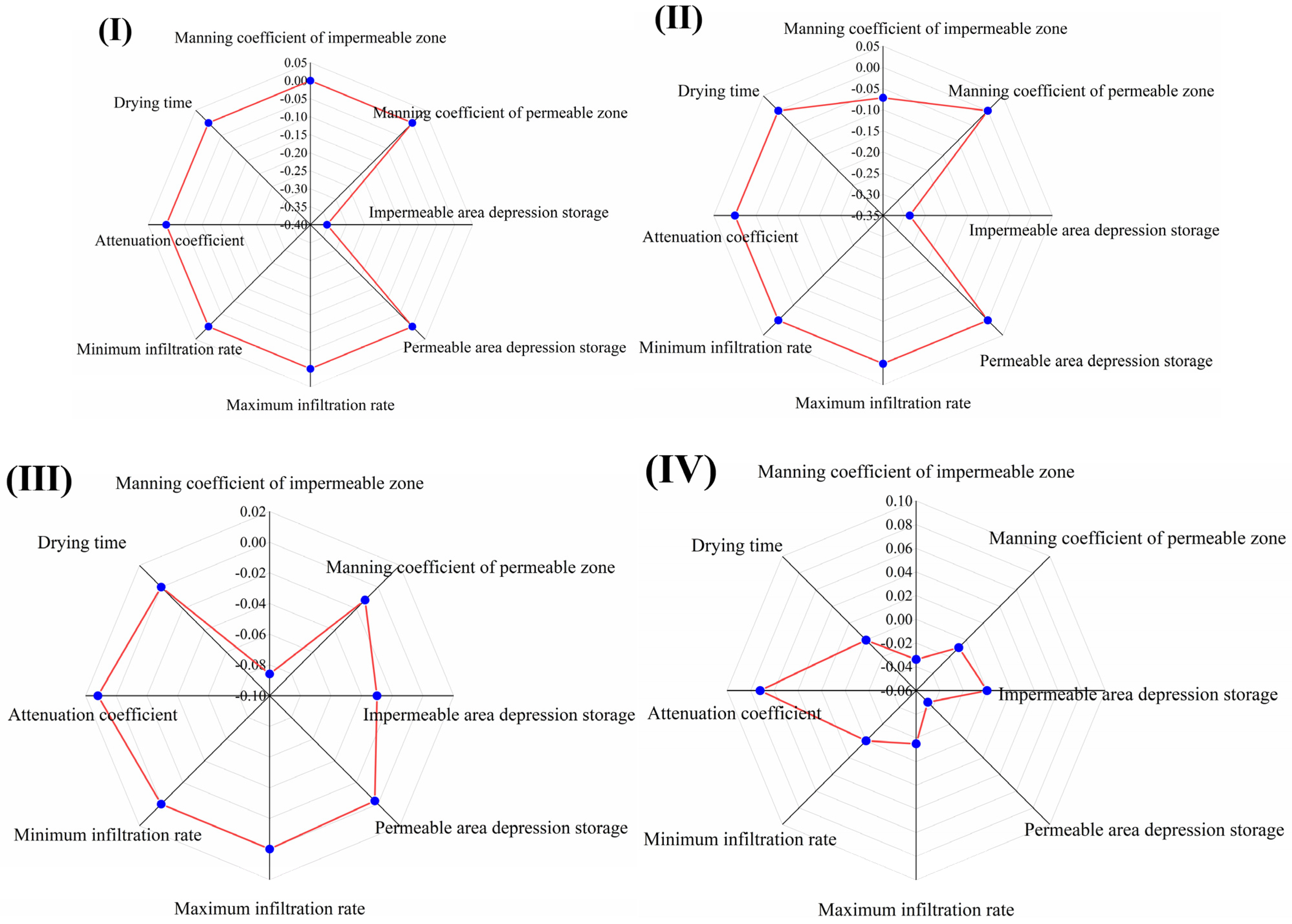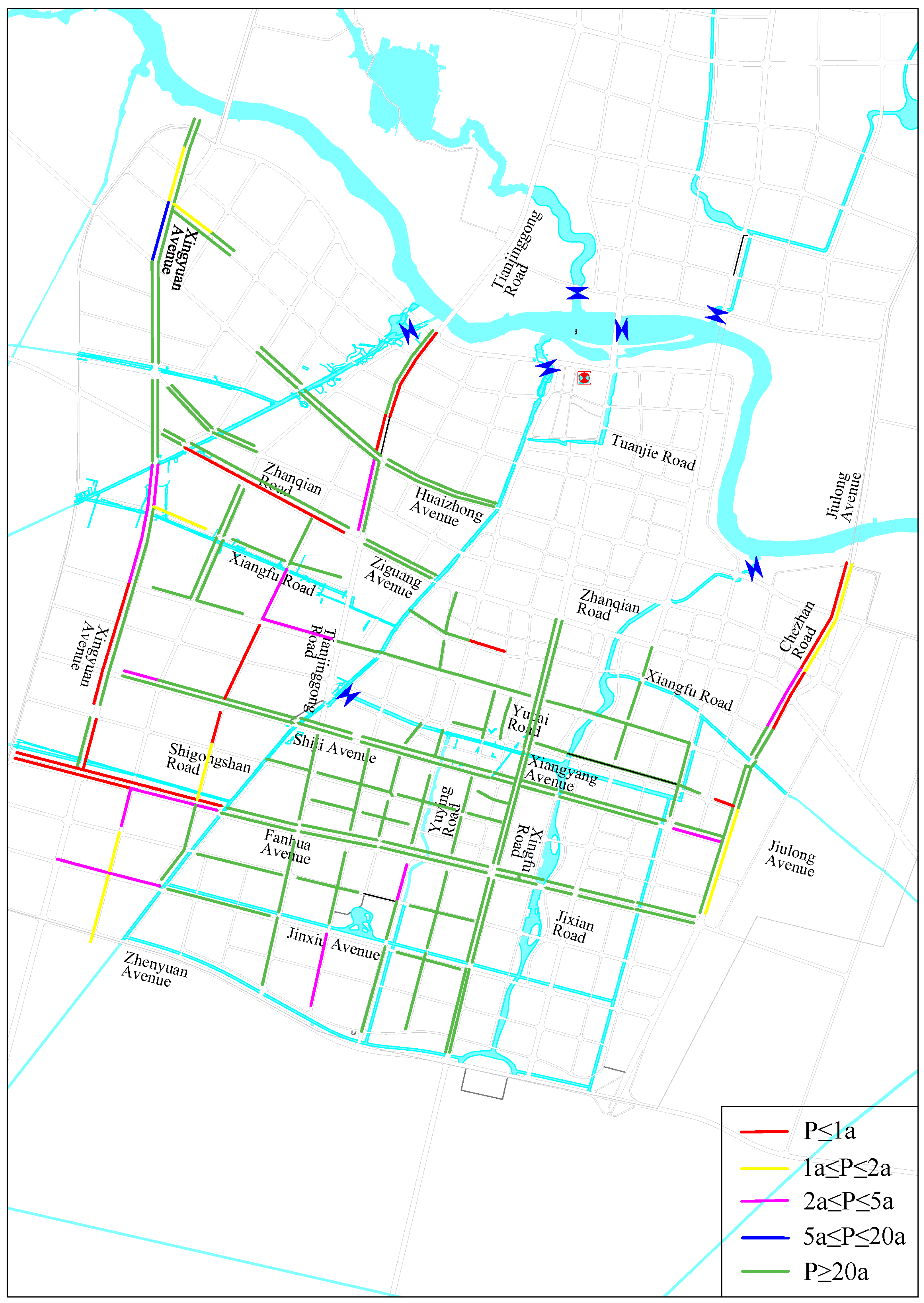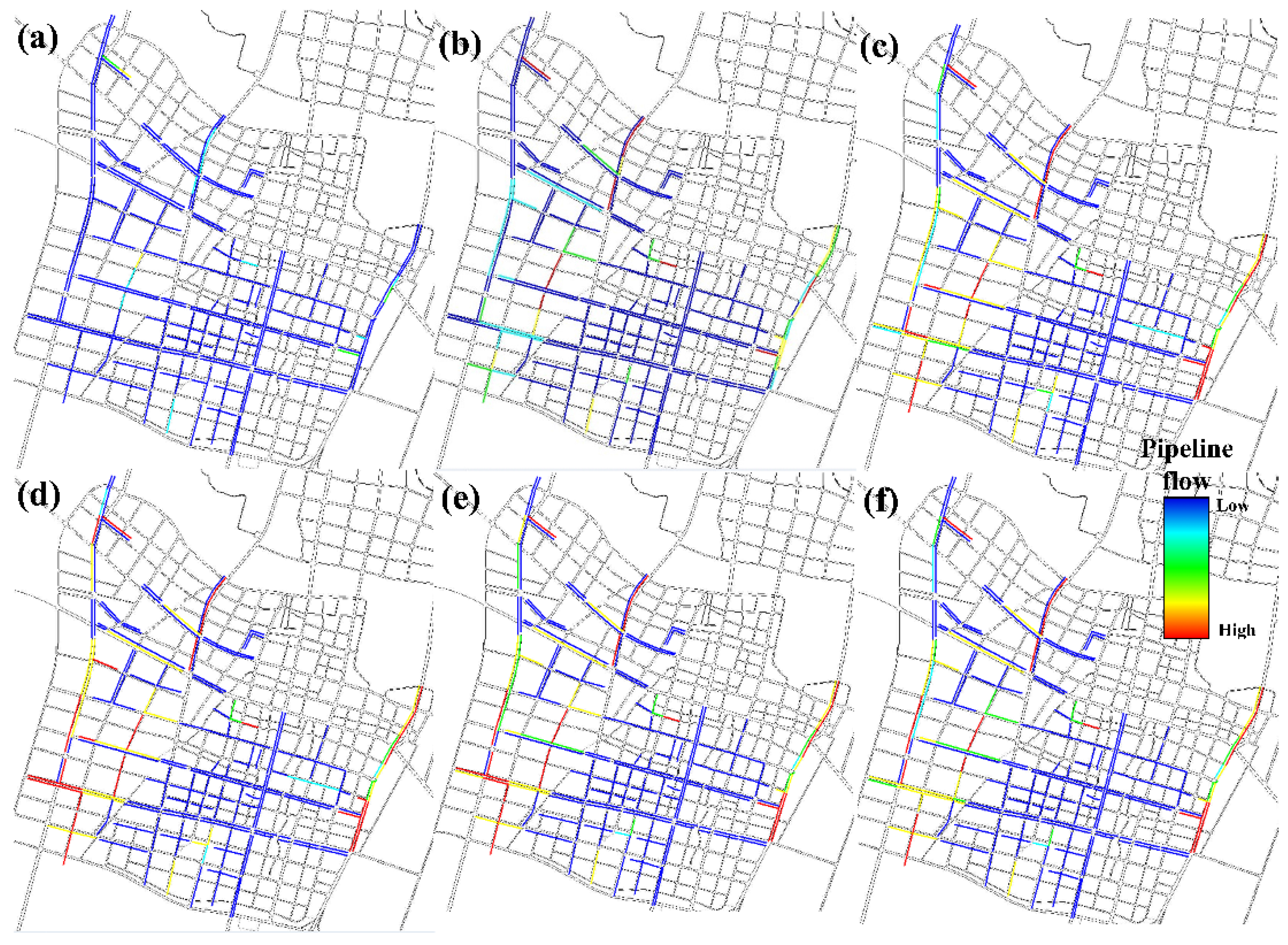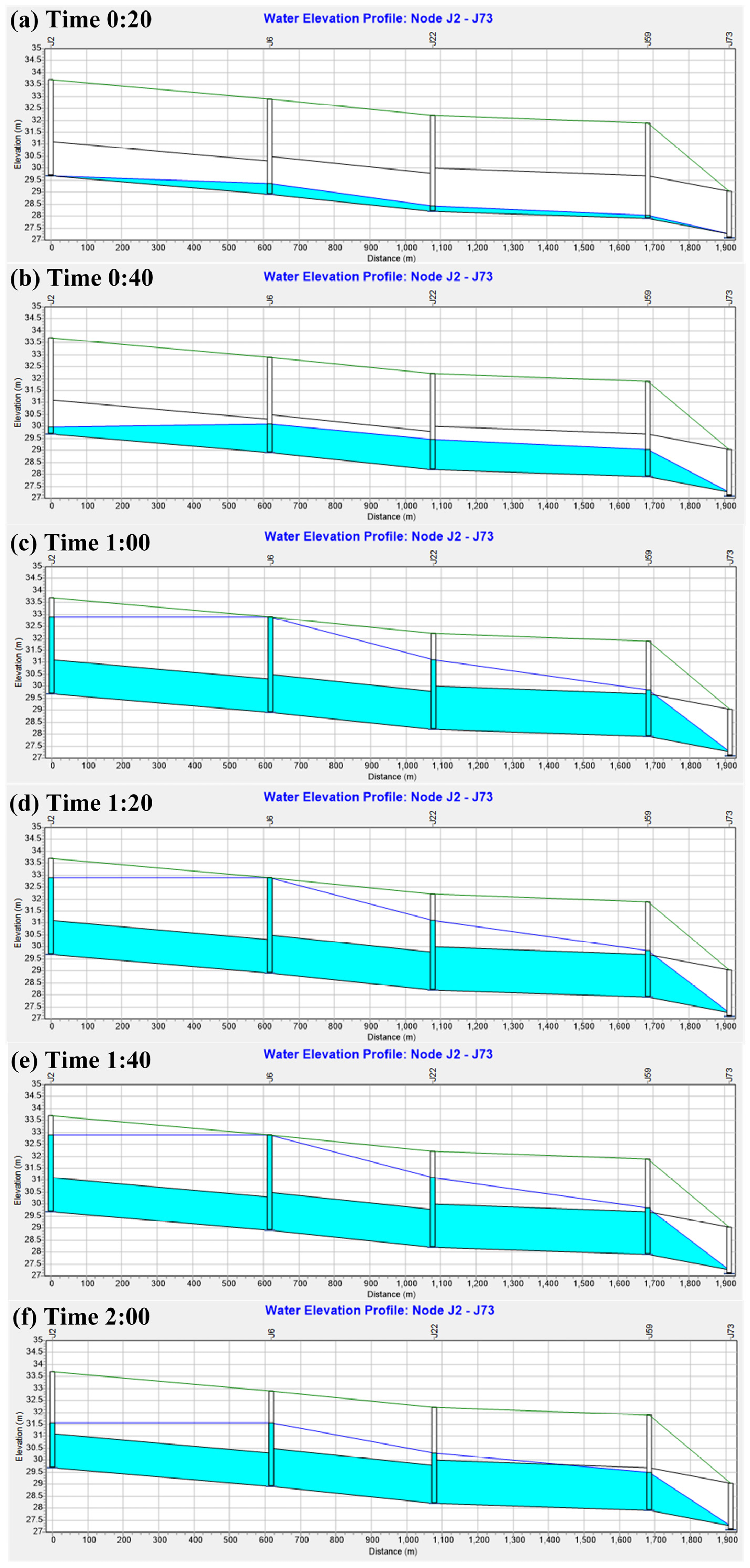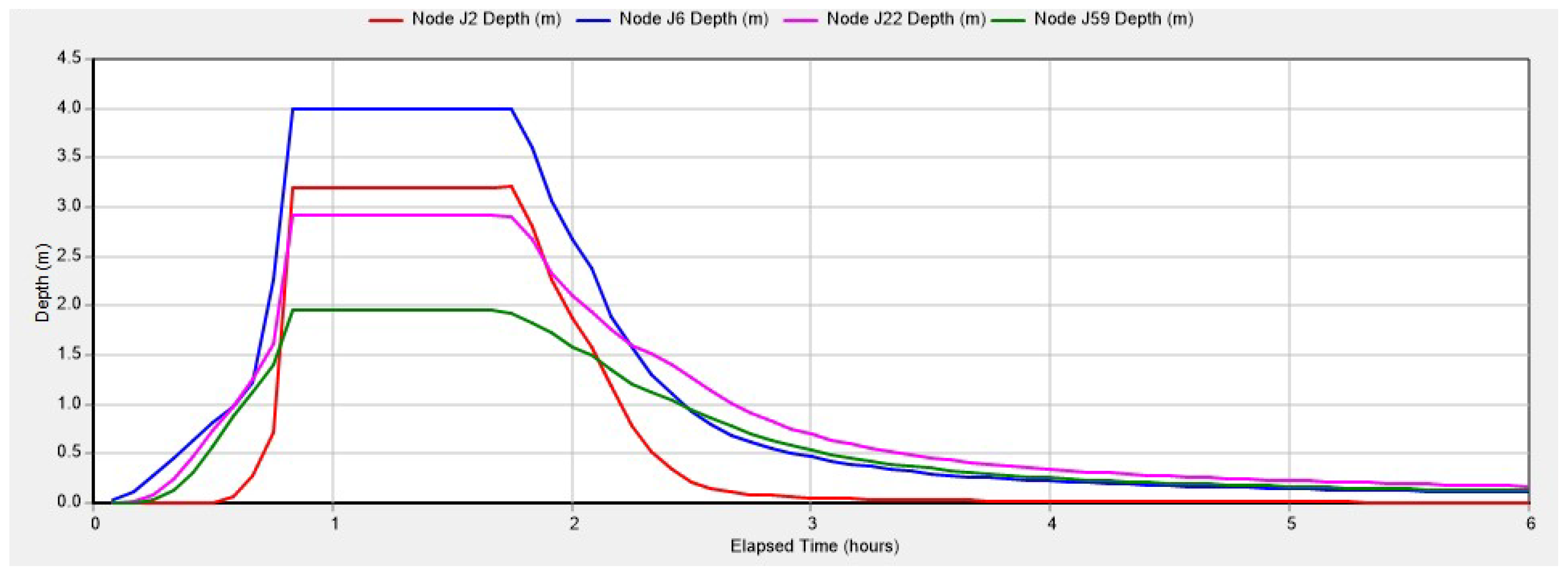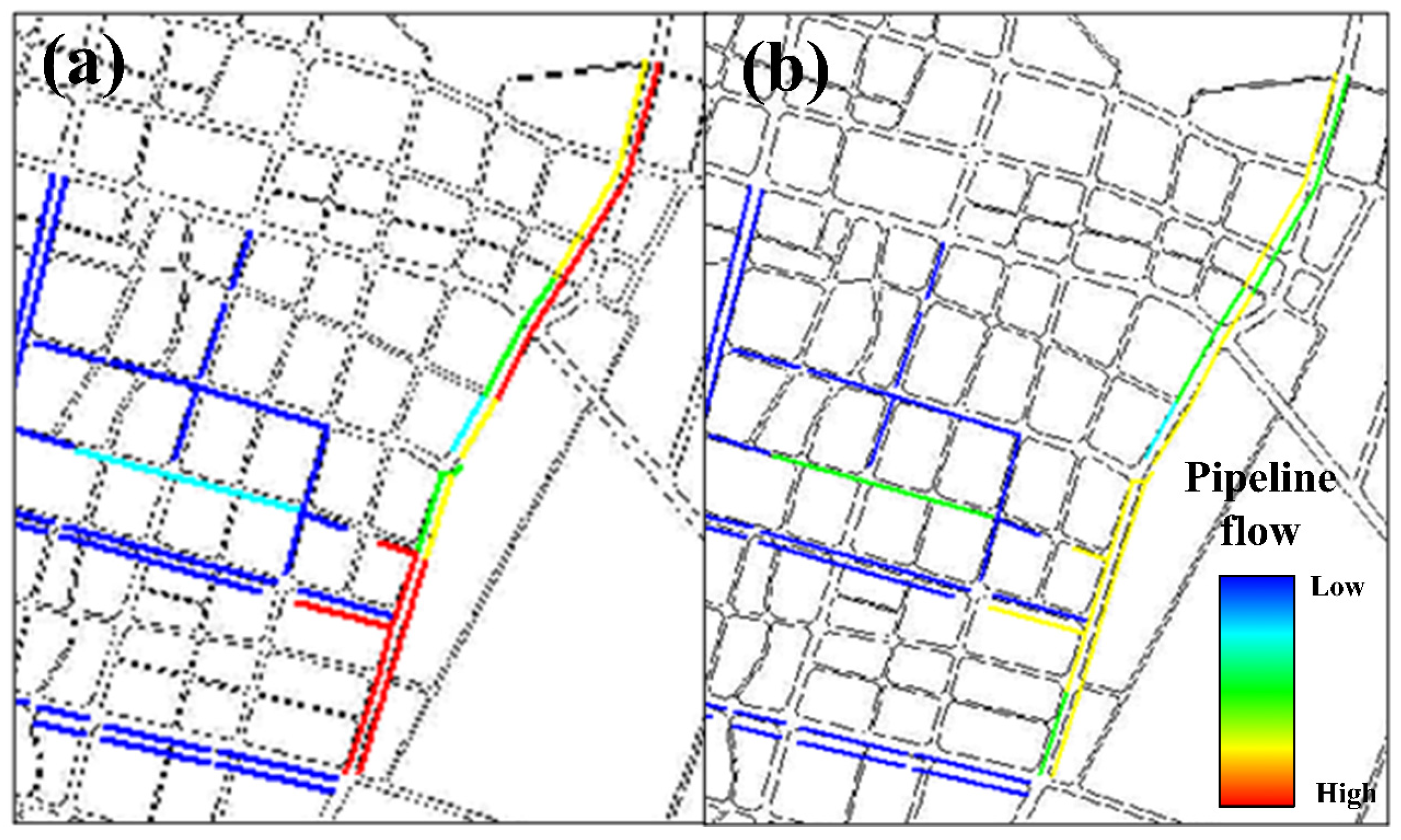2.3.1. Hydrological and Hydraulic Model Parameter Setting
Hydrological and hydraulic parameters were used for the sub-catchment and drainage pipe network simulations, respectively. The preliminary values of the parameters [
22] were analyzed as follows.
- (1)
Manning Coefficient
The preliminary Manning coefficient values for different surfaces and pipeline types are listed in
Table 3.
- (2)
Parameters of Infiltration Model
The Horton model is the most widely used and effective infiltration model for constructing a surface runoff model; the preliminary values of its parameters are listed in
Table 4.
- (3)
Depression Storage Capacity
Depression storage is classified into two types: permeable and impermeable. It was preliminarily determined that the permeable area depression storage was 6 mm, while the impervious area depression storage was 2.5 mm.
- (4)
Comprehensive Runoff Coefficient
By analyzing the space and area of green spaces, roofs, and roads, and weighing the results, the comprehensive runoff coefficient of the study area was determined to be 0.599 (
Table 5).
2.3.2. Parameter Sensitivity Analyses
Sensitivity analysis [
23] calculates the effect of artificially small fluctuations in a parameter on simulation results by giving it a small fluctuation around its predicted value. In this study, the modified Morris screening method [
21] was used to debug a parameter at a certain percentage of a fixed step such that the model was run N times. The model sensitivity discriminant factor (s) was calculated using Equation (2):
where s is the sensitivity discriminant factor, y
i is the ith simulation result, y
i+1 is the (i + 1)th simulation result, y
0 is the parameter reference value, p
i is the rate of change in the parameter relative to the initial value at the ith simulation, p
i+1 is the rate of change in the parameter relative to the initial value at the (i + 1)st simulation, and N is the number of simulations.
- (1)
Rainfall Data Selection
Four representative rainfall events with different intensities were selected.
- (2)
Selection of Model Parameters and Change Steps
To ensure that the other parameters remained unchanged, eight empirical parameters were selected as the objects based on the initial values of the simulation parameters [
24]; 70%, 80%, 90%, 110%, 120%, and 130% of the initial values and debugging of these parameter values. The parameter debugging results are presented in
Table 6.
- (3)
Evaluation Index Selection
The total surface runoff and peak flow rate were selected as sensitivity evaluation indices for the relevant parameters in this study.
Based on the parameter debugging results, the modified Morris screening method was used to study the impact of each parameter on the model under the four measured rainfall scenarios. Scenarios I, II, III, and IV represent light rain, moderate rain, heavy rain, and rainstorm events, respectively. The results of the sensitivity analysis are shown in
Table 7 and
Table 8.
- (1)
Sensitivity Analysis of Each Parameter to the Total Runoff under Different Rainfall Conditions
As shown in
Figure 5, under different rainfall intensities, the Manning coefficient of the impervious area, impermeable area depression storage, maximum infiltration rate, and attenuation coefficient were sensitive to the total runoff.
The Manning coefficient of the impervious area is moderately sensitive in moderate and heavy rainfall events and insensitive in heavy rainfall events. Under the condition of rainstorm, due to the rapid convergence of the surface, rainwater cannot be infiltrated in time, and all of it is discharged into a water body through a pipeline. When the drainage capacity of the pipe network exceeds its load, overflow will occur, and then change in its parameters will not affect the total runoff value. The low-lying storage in an impervious area only shows insensitivity in rainstorm rainfall events and is a sensitive parameter in other rainfall events, and the absolute value of its sensitivity discriminant factor will decrease with an increase in rainfall intensity. As rainfall intensity increases, the amount of depression storage on the underlying surface will gradually become saturated. If rainfall intensity exceeds a certain value, the parameter will be insensitive. The maximum infiltration rate and attenuation coefficient are only moderately sensitive to the total runoff in the two rainfall events of heavy rain and rainstorm. When rainfall intensity is low, the surface runoff rate is very slow. With an increase in rainfall intensity, the rate of runoff and water storage in a catchment area will gradually be higher than the infiltration rate, which will lead to the formation of surface runoff when the surface rainwater has no time to infiltrate.
- (2)
Sensitivity Analysis of Each Parameter for Peak Runoff under Different Rainfall Conditions
As shown in
Figure 6, the Manning coefficient of the impervious area, impermeable area depression storage, and attenuation coefficient were sensitive to the peak runoff under different rainfall intensities.
Under different rainfall scenarios, the sensitivity results of the eight model parameters [
24] to the total and peak runoff were different; the Manning coefficient of the impervious area, impermeable area depression storage, and attenuation coefficient were sensitive to both the total and peak runoffs, whereas the maximum infiltration rate was only sensitive to the total runoff. The Manning coefficient in the impervious area showed moderate sensitivity in moderate and heavy rainfall events. With a continuous increase in rainfall intensity, surface runoff gradually approaches saturation, and peak flow will not be affected even if the parameters are changed again. The amount of depression storage in an impervious area is moderately sensitive to light rain and moderate rain events, but not sensitive to heavy rain and rainstorm events. It is because of this that the sensitivity of depression storage to peak flow in an impervious area decreases with an increase in rainfall intensity. The attenuation coefficient is only moderately sensitive to peak flow in rainstorm rainfall events. Meanwhile, the other parameters are less than 0.05, all of which are insensitive parameters.
2.3.3. Modelling Rates
Based on the results of the sensitivity analysis, under the return period of a 2-year rainfall, the runoff coefficient method was used to calibrate the eight parameters, including the volume and attenuation coefficient of the impervious area. In this study, the integrated runoff coefficient was 0.599 as the objective function. The coefficient of variation method [
25] was used to detect the degree of dispersion between the simulated and actual values, and the single-peak rainfall synthesized by the Chicago Rainfall Pattern was used. The rainfall duration was 2 h and the rainfall return period was 2 years. The parameters were input into the model to obtain the simulated comprehensive runoff coefficients, which were then compared with the comprehensive runoff coefficients of the study area to select a reasonable combination of parameters. The results of the parameter combinations and their simulated runoff coefficients are shown in
Table 9.
The optimized Group 6 parameter adjustment results were adopted, and rainfall scenarios under six return periods were simulated [
26]. The comprehensive runoff coefficients under five different rainfall intensities were 0.561, 0.575, 0.653, 0.689, and 0.721, respectively. Therefore, the runoff coefficients increased as the rainfall intensity increased. The coefficient of variation method shown in Equation (2) was used to calculate the degree of dispersion between the simulated and actual values and to compare the difference between the simulated and actual comprehensive runoff coefficients. The results of the comparison between the simulated and actual runoff coefficients are shown in
Table 10.
The coefficients of variation obtained from the simulation of rainfall scenarios in different return periods were all lower than 15%, indicating that the established model could accurately reflect the actual situation. Therefore, applying this set of parameters to simulate the study area is reasonable, and the established model accurately reflects the actual situation.

